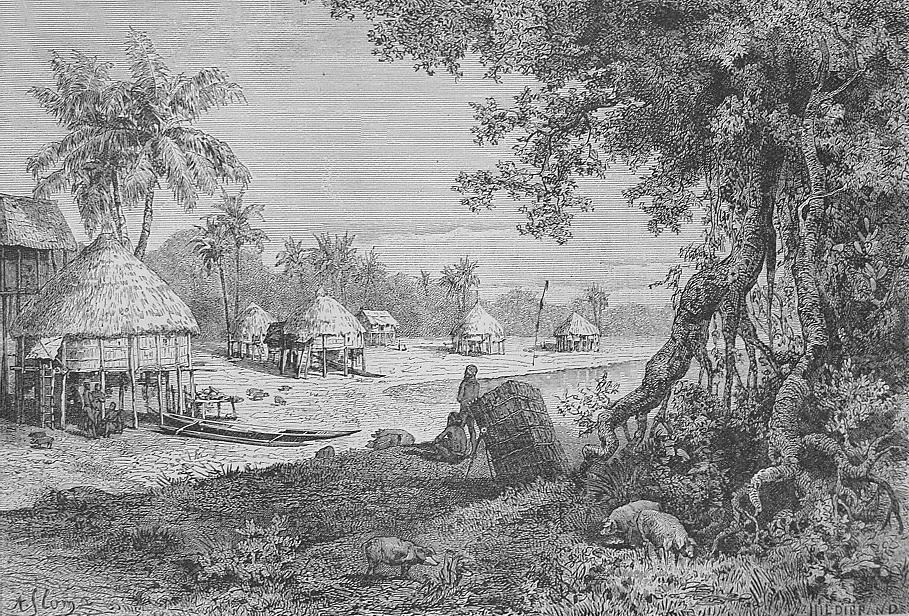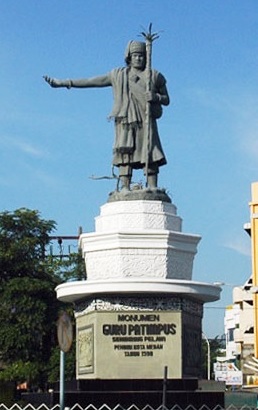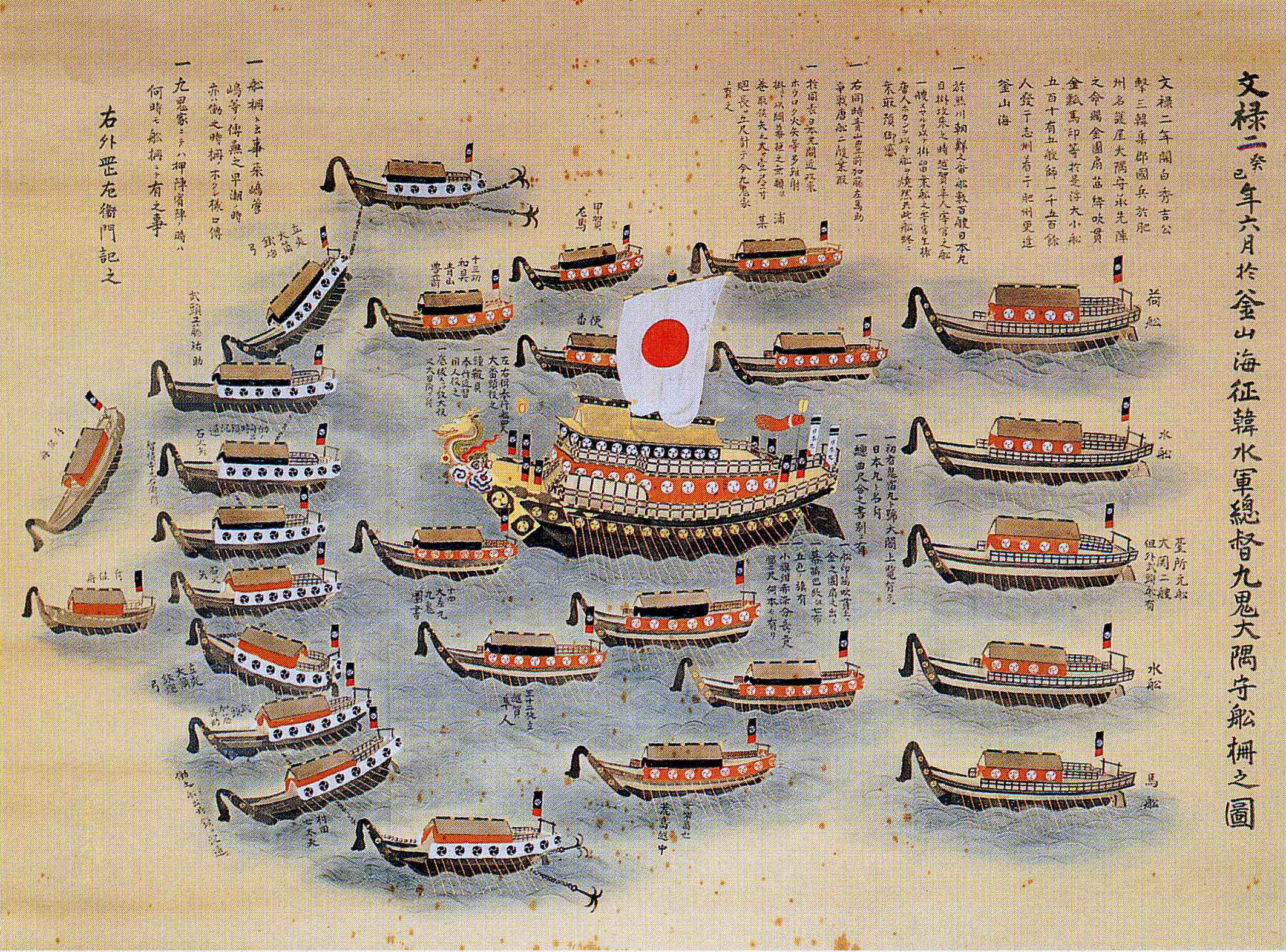|
No.1-class Auxiliary Minelayer
The was a class of minelayers of the Imperial Japanese Navy (IJN), serving during World War II. They were built to supplement the timeworn ''Sokuten''-class. 4 vessels were built in 1941–42 under the Maru Rin Programme (Ship # 257–260). Background * In 1939, the ''Sokuten''-class was the main minelayer of the local guard districts. However, they were too old. The IJN wanted new small minelayers for local guard districts. * In 1940, the IJN found out a handy boat. It was a standard longline fishing ship ''Sōyō Maru'' (160 tons) by the Ministry of Agriculture, Forestry. The IJN made a model of it and completed a design of new small minelayer. Uraga Dock Company built all of the vessels. Ships in class Photos Image:Japanese minelayer No2.jpg, ''Minelayer No.2'' on 7 April 1942 Image:Japanese minelayer No3.jpg, ''Auxiliary Minelayer No.3'' in 1942 Image:Japanese minelayer No4 in 1942.jpg, ''Auxiliary Minelayer No.4'' in 1942 Notes Bibliography *''Ships of the Wo ... [...More Info...] [...Related Items...] OR: [Wikipedia] [Google] [Baidu] |
Uraga Dock Company
was a major privately owned shipyard in Uraga, Japan, which built numerous warships for the Imperial Japanese Navy. History Uraga Dock Company was founded by Enomoto Takeaki in 1869. A shipyard had already existed in Uraga from the end of the Edo period. When Commodore Perry's flagship anchored off Uraga in 1854, one of the officials of the Tokugawa shogunate who boarded the American vessel was a trained shipwright, Nakajima Saburosuke. His observation of the ship's interior enabled him to deduce the details of its design and construction, and after the departure of Perry back to the United States, the government ordered him to start construction of a three-masted barque, called the ''Hōō maru''. He subsequently participated in the repair of the Dutch-built ''Kanrin maru'', during which time he constructed the first dry dock built in Japan in 1859. However, the Tokugawa government decided to establish its own shipyards at nearby Yokosuka, and the Uraga facilities went out ... [...More Info...] [...Related Items...] OR: [Wikipedia] [Google] [Baidu] |
Japanese Auxiliary Minelayer No
Japanese may refer to: * Something from or related to Japan, an island country in East Asia * Japanese language, spoken mainly in Japan * Japanese people, the ethnic group that identifies with Japan through ancestry or culture ** Japanese diaspora, Japanese emigrants and their descendants around the world * Japanese citizens, nationals of Japan under Japanese nationality law ** Foreign-born Japanese, naturalized citizens of Japan * Japanese writing system, consisting of kanji and kana * Japanese cuisine, the food and food culture of Japan See also * List of Japanese people * * Japonica (other) * Japonicum * Japonicus * Japanese studies Japanese studies ( Japanese: ) or Japan studies (sometimes Japanology in Europe), is a sub-field of area studies or East Asian studies involved in social sciences and humanities research on Japan. It incorporates fields such as the study of Japan ... {{disambiguation Language and nationality disambiguation pages ... [...More Info...] [...Related Items...] OR: [Wikipedia] [Google] [Baidu] |
Car Nicobar
Car Nicobar ( in Car language) is the northernmost of the Nicobar Islands. It is also one of three local administrative divisions of the Indian district of Nicobar, part of the Indian union territory of Andaman and Nicobar Islands. Annual rainfall is 2800 millimetres. History The sea farers of the region referred to the island as the "northern land of the nake" i.e. Car Nakkavar which is perhaps the direct predecessor of the current name Car Nicobar. 2004 tsunami devastation The island was severely affected by the tsunami that was caused by the 2004 Indian Ocean earthquake, which led to many deaths and damaged infrastructure. Car Nicobar lies from the epicenter of the 2004 Indian Ocean earthquake, and the ensuing tsunamis struck it with great force. Witnesses reported the waves were as high as 30 ft (9 m). As of December 30, 2004, the number of casualties remained unknown, but were estimated to be high. One survivor told the Associated Press: "There's not a single hut ... [...More Info...] [...Related Items...] OR: [Wikipedia] [Google] [Baidu] |
HMS Tally-Ho (P317)
HMS ''Tally-Ho'' was a British submarine of the third group of the T class. She was built as ''P317'' by Vickers Armstrong, Barrow and launched on 23 December 1942. She has been the only ship of the Royal Navy to bear the name, that of the hunting call, "Tally-Ho!". Second World War service While commanded by Captain Leslie W. A. Bennington, ''Tally-Ho'' served in the Far East for much of her wartime career, where she sank thirteen small Japanese sailing vessels, a Japanese coaster, the Japanese water carrier ''Kisogawa Maru'', the Japanese army cargo ships ''Ryuko'' and ''Daigen Maru No.6'', the Japanese auxiliary submarine chaser '' Cha 2'', and the Japanese auxiliary minelayer ''Ma 4''. She also damaged a small Japanese motor vessel, and laid mines, one of which damaged the Japanese merchant tanker ''Nichiyoku Maru''. On 11 January 1944, ''Tally-Ho'', then based out of Trincomalee, Ceylon spotted the Japanese light cruiser and destroyer on anti-submarine warfare exer ... [...More Info...] [...Related Items...] OR: [Wikipedia] [Google] [Baidu] |
Chuuk State
Chuuk State (; also known as Truk) is one of the four states of the Federated States of Micronesia (FSM). The other states are Kosrae State, Pohnpei State, and Yap State. It consists of several island groups: * Namoneas * Faichuuk * Hall Islands * Namonuito Atoll (Magur Islands) (northwest) * Pattiw (Western Islands) * Mortlock Islands Chuuk is the most populous state of the FSM with 50,000 inhabitants on . Chuuk Lagoon is where most people live. Weno Island in the lagoon functions as state capital and is FSM's biggest city. It is scheduled to possibly vote for independence as proposed. History Indigenous settlement Chuuk was first settled by Austronesians, believed to be from the Lapita culture of Island Melanesia. Archaeological evidence indicates that islands of Feefen and Wééné Islands had human settlements in the first and second century BC. Later evidence indicates that widespread human settlements appeared in Chuuk during the 14th century AD, as the Chuukese cul ... [...More Info...] [...Related Items...] OR: [Wikipedia] [Google] [Baidu] |
Surabaya
Surabaya ( jv, ꦱꦸꦫꦧꦪ or jv, ꦯꦹꦫꦨꦪ; ; ) is the capital city of the Provinces of Indonesia, Indonesian province of East Java and the List of Indonesian cities by population, second-largest city in Indonesia, after Jakarta. Located on the northeastern border of Java island, on the Madura Strait, it is one of the earliest port cities in Southeast Asia. According to the Government of Indonesia, National Development Planning Agency, Surabaya is one of the Regions of Indonesia#Development regions, four main central cities of Indonesia, alongside Jakarta, Medan, and Makassar. The city has a population of 2.87 million within its city limits at the 2020 census and 9.5 million in the extended Surabaya metropolitan area, making it the List of metropolitan areas in Indonesia, second-largest metropolitan area in Indonesia. The city was settled in the 10th century by the Janggala, Kingdom of Janggala, one of the two Javanese kingdoms that was formed in 1045 when ... [...More Info...] [...Related Items...] OR: [Wikipedia] [Google] [Baidu] |
Imperial Japanese Navy Ship Classifications
Imperial Japanese Navy ship classifications went through various changes between 1871 and 1945, as technology changed and new ship classes were added while those that became obsolete were discontinued. There were efforts to translate some ships' classes that were imported or in use by other navies, while incorporating any classification system into Japanese language conventions and maintaining an internal consistency. Classification terminology These were legal classifications of the naval vessels of the Imperial Japanese Navy. Therefore, those names are different from universal classifications and Ship class, class names. In laws, ordinances, regulations, and policies pertaining to the Imperial Japanese Navy, there were no classifications related to the light aircraft carrier, escort carrier, heavy cruiser or light cruiser. Even if it is assumed that these translation were different in the Japanese language, there could be the same phrase and class in English language, and vice ... [...More Info...] [...Related Items...] OR: [Wikipedia] [Google] [Baidu] |
Medan
Medan (; English: ) is the capital and largest city of the Indonesian province of North Sumatra, as well as a regional hub and financial centre of Sumatra. According to the National Development Planning Agency, Medan is one of the four main central cities of Indonesia, alongside Jakarta, Surabaya, and Makassar. As of the 2020 Census, Medan has a population of 2,435,252 within its city limits,Badan Pusat Statistik, Jakarta, 2021. and over 3.4 million in its built-up urban area, making it the fourth largest urban area in Indonesia. The Medan metropolitan area—which includes neighbouring Binjai, Deli Serdang Regency, and a part of Karo Regency—is the largest metropolitan area outside of Java, with 4,744,323 residents counted in the 2020 Census. Medan is a multicultural metropolis and a busy trading city bordered by the Strait of Malacca, making it one of the major economic cities in Indonesia. A gateway to the western part of Indonesia, Medan is supported by the Port of ... [...More Info...] [...Related Items...] OR: [Wikipedia] [Google] [Baidu] |
Ministry Of Agriculture, Forestry And Fisheries (Japan)
The is a Cabinet (government), cabinet level ministry in the government of Japan responsible for oversight of the agriculture, forestry and fishing industry, fishing industries. Its acronym is MAFF. The current Minister of Agriculture, Forestry and Fisheries (Japan), Minister of Agriculture, Forestry and Fisheries is Taku Etō. History The Meiji Constitution, Constitution of the Empire of Japan provided for the creation of a , which was established in 1881, with Tani Tateki as its first minister. As an additional note, the Ministry of Agriculture and Commerce was a division that served as the Ministry of Agriculture, Forestry and Fisheries and the Ministry of Economy, Trade and Industry. In 1925, the commerce functions were separated out into a separate , and the ministry was renamed the . The ministry was also given responsibility for oversight of the Factory Act of 1903, which provided regulations for work hours and worker safety in both industrial and agricultural industries. ... [...More Info...] [...Related Items...] OR: [Wikipedia] [Google] [Baidu] |
Naval Ensign Of Japan
The national flag of Japan is a rectangular white banner bearing a crimson-red circle at its center. This flag is officially called the , but is more commonly known in Japan as the . It embodies the country's sobriquet: the Land of the Rising Sun. The ''Nisshoki'' flag is designated as the national flag in the Act on National Flag and Anthem, which was promulgated and became effective on 13 August 1999. Although no earlier legislation had specified a national flag, the sun-disc flag had already become the ''de facto'' national flag of Japan. Two proclamations issued in 1870 by the Daijō-kan, the governmental body of the early Meiji period, each had a provision for a design of the national flag. A sun-disc flag was adopted as the national flag for merchant ships under Proclamation No. 57 of Meiji 3 (issued on 27 February 1870), and as the national flag used by the Navy under Proclamation No. 651 of Meiji 3 (issued on 27 October 1870). Use of the ''Hinomaru'' was severely restric ... [...More Info...] [...Related Items...] OR: [Wikipedia] [Google] [Baidu] |
Temporal Naval Armaments Supplement Programme (Japan, 1940)
The is one of the armaments expansion plan of the Imperial Japanese Navy (IJN). Background In October 1940, the IJN schemed building of the submarines and auxiliary vessels because there was a shortage of them. Table of vessels See also * 1st Naval Armaments Supplement Programme (Maru 1 Keikaku, 1931) * 2nd Naval Armaments Supplement Programme (Maru 2 Keikaku, 1934) * 3rd Naval Armaments Supplement Programme (Maru 3 Keikaku, 1937) *4th Naval Armaments Supplement Programme (Maru 4 Keikaku, 1939) * Rapidly Naval Armaments Supplement Programme (Maru Kyū Keikaku, 1941) * Additional Naval Armaments Supplement Programme (Maru Tui Keikaku, 1941) * 5th Naval Armaments Supplement Programme (Maru 5 Keikaku, 1941) *6th Naval Armaments Supplement Programme (Maru 6 Keikaku, 1942) * Modified 5th Naval Armaments Supplement Programme (Kai-Maru 5 Keikaku, 1942) * Wartime Naval Armaments Supplement Programme (Maru Sen Keikaku, 1944) References *''Rekishi Gunzō series'', Gakken (Japan) *''The Ma ... [...More Info...] [...Related Items...] OR: [Wikipedia] [Google] [Baidu] |
World War II
World War II or the Second World War, often abbreviated as WWII or WW2, was a world war that lasted from 1939 to 1945. It involved the vast majority of the world's countries—including all of the great powers—forming two opposing military alliances: the Allies and the Axis powers. World War II was a total war that directly involved more than 100 million personnel from more than 30 countries. The major participants in the war threw their entire economic, industrial, and scientific capabilities behind the war effort, blurring the distinction between civilian and military resources. Aircraft played a major role in the conflict, enabling the strategic bombing of population centres and deploying the only two nuclear weapons ever used in war. World War II was by far the deadliest conflict in human history; it resulted in 70 to 85 million fatalities, mostly among civilians. Tens of millions died due to genocides (including the Holocaust), starvation, ma ... [...More Info...] [...Related Items...] OR: [Wikipedia] [Google] [Baidu] |





